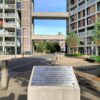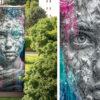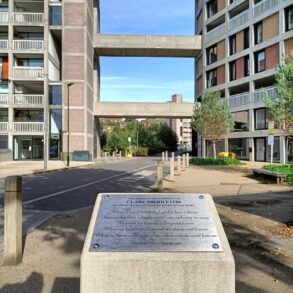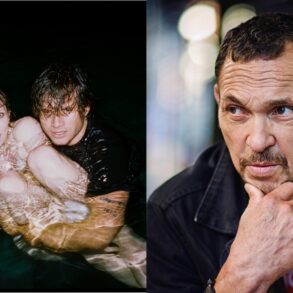Watch more of our videos on ShotsTV.com
and on Freeview 262 or Freely 565
Designated sites for graffiti artwork could be rolled out across South Tyneside under plans due to be considered by town hall bosses.
Over the past year, the cross-party scrutiny panel has seen councillors take a deep dive into how graffiti is tackled across the borough.
This included gathering information and evidence from council teams and partners such as the police, Nexus, South Tyneside Young People’s Parliament and community payback team, as well as considering best practice in neighbouring areas.
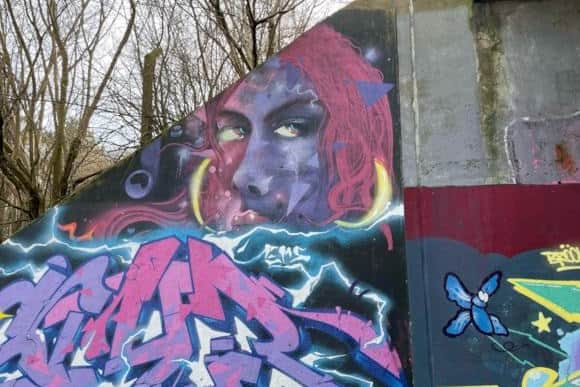

The commission defined graffiti as “drawings or writing done on a wall or structure in a public place without permission” and noted it was regarded as criminal damage.
While acknowledging that some graffiti is “seen as a legitimate art form”, the scrutiny panel noted the majority of graffiti appearing on streets is “poor quality tagging”, which “defaces the public realm”.
South Tyneside Council aims to remove offensive graffiti within 24 hours, and non-offensive graffiti within five days, with graffiti removal costing the council around £100,000 a year.
Although the Our Place Scrutiny Committee agreed the council’s practices around graffiti removal were working well, councillors made recommendations of initiatives and actions which could help in the fight against graffiti.
One proposal, which will be discussed by South Tyneside Council’s cabinet this week, includes a managed approach to street art by having dedicated ‘urban art sites’.
These ‘tolerated’ graffiti sites would be developed in collaboration with community groups and residents through the council’s five community area forums, and aim to provide graffiti artists with dedicated space to use.
A council cabinet report states the future sites “should only be in locations which are in fitting with the area and surroundings”, such as skateparks or “appropriate underpasses”.
Details of the actual sites, their “intended purpose, their restrictions and who is responsible for the upkeep” are expected to be discussed at community area forums in future, and proposals for an ‘urban art site register’ have also been mooted.
Urban art sites in ‘appropriate locations’ are one of six recommendations to be considered by cabinet when they meet on Wednesday, October 2.
Other recommendations include extra training around the management of graffiti removal, “enhanced” council communications around the issue and work with the Home Office and Probation Service to identify where schemes such as community payback could be used to tackle graffiti issues.
Another suggestion to cabinet includes organisations signed up to the South Tyneside Pledge network being able to “sponsor graffiti removal across the borough” by, for example, “donating supplies and equipment”.
Councillor Ernest Gibson, cabinet member for neighbourhoods and climate change, said: “We continue to do everything we can to ensure our borough is clean and graffiti-free.
“While graffiti is regarded as unsightly, a blight on our communities, not to mention a criminal offence, there are certain locations where street art-style graffiti could work well if properly managed and with permission. Although offensive graffiti will never be tolerated.
“We need to strike a balance between what is low-level tagging and mindless vandalism, and what can be considered as artistic expression at sites such as the skatepark at South Shields Promenade where graffiti is deemed appropriate, in fitting with the immediate area and tends to be respected by other graffiti artists.
“We look forward to discussing the recommendations in more detail at cabinet.”
Some existing ‘street art’ locations include the walls at Albermarle Street and Monkton Cycleway.
Other accepted graffiti locations include graffiti-style art murals, such as the Hopkins Walk underpass, and the scrutiny commission noted that similar murals could be designed in collaboration with the local community at other appropriate locations.
The commission also noted that the artwork in dedicated graffiti spaces tends to be of high-quality and is periodically refreshed and renewed by the artists themselves.
Councillor Alison Strike, chair of Our Place Scrutiny Committee, said the commission gave councillors “a chance to break down the issue, look at what works well and where improvements could be made”.
“There has been a wealth of work carried out over the last 12 months and we thank everyone for their involvement,” she added.
“The commission concluded that illegal graffiti and tagging continues to be a significant challenge due to the negative impact on the environment and costs to clean up.
“However, graffiti and street art could be acceptable in the right setting and with the support of the community, for example in artwork projects developed by local people that help to brighten dark spaces.
“We are pleased to bring forward recommendations to cabinet that aim to help tackle graffiti and reduce removal costs.”
South Tyneside Council’s cabinet will meet on Wednesday, October 2, at 4pm, at South Shields Town Hall.
To report graffiti, visit South Tyneside Council’s website here.
This post was originally published on this site be sure to check out more of their content.

